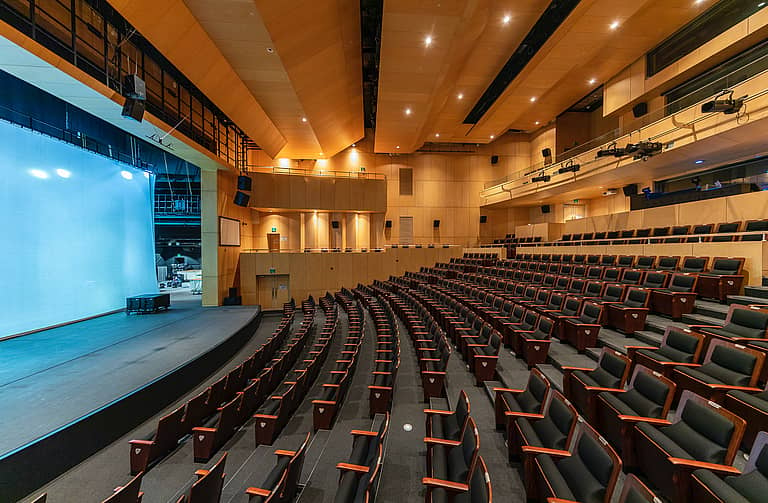Most people’s lives, whether they know it or not, center around internet protocol (IP). IP provides the structure computers, and networks use to communicate information across the internet. Even though individuals and businesses are used to sending and receiving emails, images, links, and other content via IP, many still don’t understand the benefits of IP-based audio.
Here’s what IP-based audio involves, how it’s different from traditional audio solutions, and why this technology is poised to drive the future of business.
What is IP-based Audio?
IP-based audio is sound sent over the internet. As mentioned above, internet protocol (IP) plays a dominant role in the transmission of all data through the computers and networks around the world that form the internet. Additionally, the vast majority of people have already experienced some form of IP-based audio, such as phone calls, voice chats, and audio from movies and music.
Nevertheless, IP-based audio is different and, in some ways, better than what you’re used to. For example, the audio sent through your phone and online voice chats may not be very high-quality. On the other hand, IP-based audio can be extremely high quality. This is because there are different algorithms, called codecs, used to turn the original sound into something that can travel through wires and wireless networks.
Using certain codecs and with high-speed internet, you can send the audio produced by a high-quality microphone with such high fidelity that the recipient may not notice any drop in quality at all.
How Does IP-based Audio Differ from Traditional Audio Solutions?
With IP-based audio, you can route and process audio through nearly any kind of network, such as throughout a business’s campus, as well as across town or the world. That way, it offers far more capabilities and flexibility.
For example, IP-based audio allows you to route signals to multiple destinations without using extra hardware to split your signals. Plus, you don’t have to worry about physical distance limitations because you’re sending the sound through the internet.
What Are the Benefits of IP-based Audio?
In addition to the benefits mentioned above, you can also use a smaller-size system because you can connect a variety of microphones using a network as opposed to using physical wires.
Also, because you’re digitizing the audio, you can use a wide range of software programs to process it. This paves the way for real-time effects and plug-ins you can use to improve audio quality, such as echo cancellation and graphic equalization, without having to invest in expensive hardware.
Why Will IP-based Audio Guide the Future of Audio Equipment?
In addition to the flexibility and customizability mentioned above, it’s also far easier to install a system that can manage and transmit IP-based audio. This makes it a powerful, virtually future-proof solution, especially for organizations that need the flexibility to scale up quickly and inexpensively.
For example, to get an audio signal to someone’s computer, you can use existing Cat 5 or 6 cabling or run new cabling for relatively little money. A single cable is capable of transmitting audio from hundreds of channels simultaneously.
What Are the Potential Applications of IP-based Audio?
IP-based audio has a nearly unlimited number of applications. This is because you can send audio quickly with high quality from a central location to many destinations around the world using IP-based audio. If the computer that accepts the original signal has even a basic audio interface, all locations can enjoy crystal-clear voice, music, and video sound. Here are some common use cases:
- Conferencing in both business and academic settings
- Presentations
- Teams/Zoom rooms
- Training centers
The Limitations of IP-based Audio
Because IP-based audio has to go to the internet, there may, at times, be a noticeable delay. This is because the data packets that the audio signal gets transformed into have to travel through the network, which can take time. As a result, if people need audio with absolutely next-to-zero latency, an IP-based system may not be the best choice.
Also, in some cases, an organization may have high network traffic or insufficient bandwidth, which could result in problematic latency. However, in many situations, the delay is either unnoticeable or has no significant impact on the program, presentation, or communication. Furthermore, as technology improves, the speed of delivery will also increase, reducing these limitations and cementing IP-based audio as an excellent audio solution.
See how your organization can use IP-based audio, connect with us today. We can help you choose the right system for your application and detail what you would need to scale up in the future.




